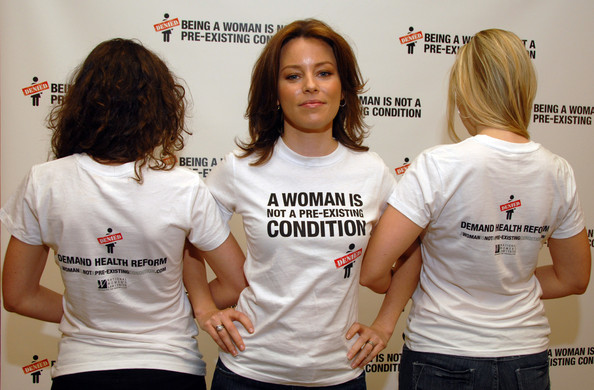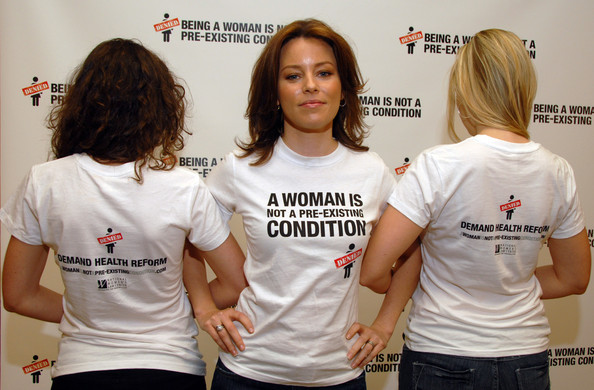The Value of Story in Debating Health Care Reform
This post is by CHMP senior fellows Jim Stubenrauch and Joy Jacobson, co-founders of the program in Narrative Writing for Health Care Professionals. Follow them on Twitter: @jimstuben and @joyjaco. 
When talking about the work we do here at the CHMP, bringing workshops and classes in writing reflective narratives to nurses and nursing students, we occasionally get puzzled looks. Why teach writing to nurses?
A recent essay in the Narrative Matters section of the journal Health Affairs exemplifies the power of nurses’ narratives and the way personal stories can illuminate larger policy issues.
In “A Nurse Learns Firsthand That You May Fend for Yourself After a Hospital Stay,” Beth Ann Swan tells of a dire medical ordeal: while in Chicago on a business trip, her husband was hospitalized after a brain stem stroke. “In an instant,” Swan writes,
we were thrown into the unreal world of medical “care coordination” and “transition management.” There would be no easy way for us to get Eric from a hospital there to a hospital here and then to home. And along the way there would be gaps in the care Eric received—gaps so large they were more like chasms. We just didn’t know it yet.
It fell to Swan, dean and professor at the Jefferson School of Nursing at Thomas Jefferson University in Philadelphia, to coordinate all aspects of her husband’s recovery, including his transfer from Chicago to a rehab facility in Philadelphia. Even with all of her nursing knowledge and medical contacts, Swan found the following year of coordinating Eric’s outpatient care nearly all-consuming.
In addition to telling this compelling personal story, Swan goes on to advocate one of the strategies for health care reform supported by the Affordable Care Act. Often overlooked in political debates and mainstream media coverage, the ACA’s transitional care initiatives offer real hope of improving health care by bridging the many gaps in our fragmented health care system.
Nurses play a crucial role in transitional care. Swan writes that her husband’s hospital nurses answered questions at any time but that after Eric’s discharge—when they needed as much help as they did during his hospitalization—the nurses were nowhere to be found:
As a patient’s wife, I would have welcomed having an RN as a point of contact. As a nursing school dean, I know the evidence demonstrating that registered nurses are critical to the operational and financial success of health care delivery systems. . . . I also know that nurses have the expertise to bridge care transitions and are critical to coordinating care across all settings.
Swan shows how a well-told story can bring home, with urgent poignancy, a complex topic like transitional care and explain why it should be part of the ACA. (For more on the ACA’s support of new transitional care models, see CHMP co-director Diana Mason’s recent HealthCetera blog post.)
Fitzhugh Mullan, a physician who founded the Narrative Matters column in Health Affairs, said in an interview published in the Permanente Journal that he defined the policy narrative as “an essay form that falls between the editorial and the short story or memoir.” He goes on to say,
This post is by CHMP senior fellows Jim Stubenrauch and Joy Jacobson, co-founders of the program in Narrative Writing for Health Care Professionals. Follow them on Twitter: @jimstuben and @joyjaco. 
When talking about the work we do here at the CHMP, bringing workshops and classes in writing reflective narratives to nurses and nursing students, we occasionally get puzzled looks. Why teach writing to nurses?
A recent essay in the Narrative Matters section of the journal Health Affairs exemplifies the power of nurses’ narratives and the way personal stories can illuminate larger policy issues.
In “A Nurse Learns Firsthand That You May Fend for Yourself After a Hospital Stay,” Beth Ann Swan tells of a dire medical ordeal: while in Chicago on a business trip, her husband was hospitalized after a brain stem stroke. “In an instant,” Swan writes,
we were thrown into the unreal world of medical “care coordination” and “transition management.” There would be no easy way for us to get Eric from a hospital there to a hospital here and then to home. And along the way there would be gaps in the care Eric received—gaps so large they were more like chasms. We just didn’t know it yet.
It fell to Swan, dean and professor at the Jefferson School of Nursing at Thomas Jefferson University in Philadelphia, to coordinate all aspects of her husband’s recovery, including his transfer from Chicago to a rehab facility in Philadelphia. Even with all of her nursing knowledge and medical contacts, Swan found the following year of coordinating Eric’s outpatient care nearly all-consuming.
In addition to telling this compelling personal story, Swan goes on to advocate one of the strategies for health care reform supported by the Affordable Care Act. Often overlooked in political debates and mainstream media coverage, the ACA’s transitional care initiatives offer real hope of improving health care by bridging the many gaps in our fragmented health care system.
Nurses play a crucial role in transitional care. Swan writes that her husband’s hospital nurses answered questions at any time but that after Eric’s discharge—when they needed as much help as they did during his hospitalization—the nurses were nowhere to be found:
As a patient’s wife, I would have welcomed having an RN as a point of contact. As a nursing school dean, I know the evidence demonstrating that registered nurses are critical to the operational and financial success of health care delivery systems. . . . I also know that nurses have the expertise to bridge care transitions and are critical to coordinating care across all settings.
Swan shows how a well-told story can bring home, with urgent poignancy, a complex topic like transitional care and explain why it should be part of the ACA. (For more on the ACA’s support of new transitional care models, see CHMP co-director Diana Mason’s recent HealthCetera blog post.)
Fitzhugh Mullan, a physician who founded the Narrative Matters column in Health Affairs, said in an interview published in the Permanente Journal that he defined the policy narrative as “an essay form that falls between the editorial and the short story or memoir.” He goes on to say,







